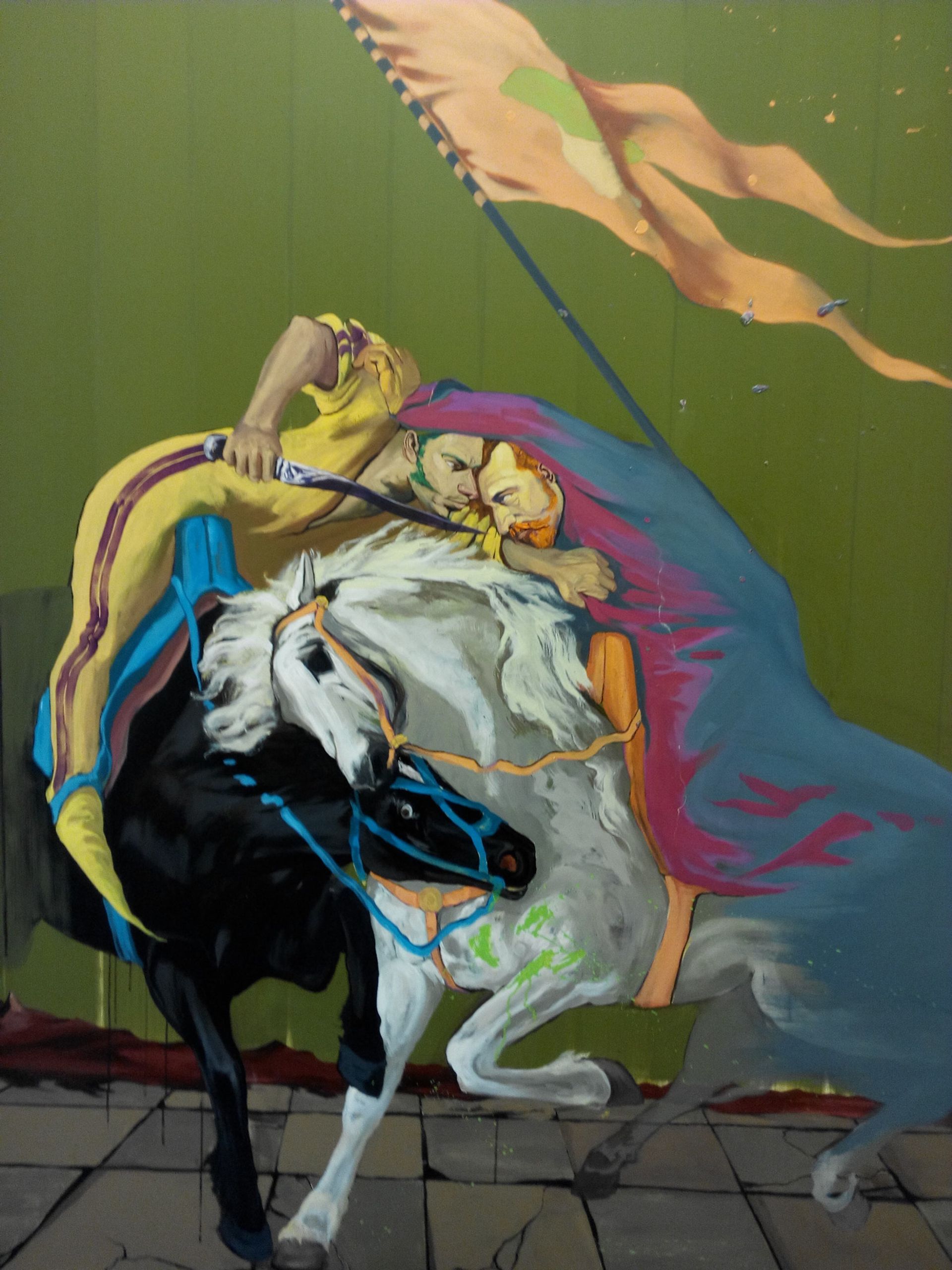Art Beijing, which closed its tenth edition on Sunday, 3 May, has been called China’s worst art fair, yet the capital’s best. The main criticism is that the fair is aimed more at a general public than the art industry, and this year’s event had its fair share of crowd-pleasing works: statues of Shawn the Sheep, kewpie-eyed sexy girls and Bi Heng’s comic book-inspired “Iron Panda”. However, exhibitors said that the fair’s organisation and the caliber of collectors who came out this year had improved.
“The Art Beijing team really works hard, we can see the progress every year, especially this year,” says the Beijing dealer Amy Li, who exhibited for a sixth time. Li’s sales included a painting by Ye Yongqing for over $60,000, and the many young collectors she met were all Chinese, a change from previous years when outside collectors made up half of her fair clientele. “I wish we could see more foreign buyers.”
Other galleries reported that Beijingers constituted aorund 60% to 80% of buyers. Chiara Hsinke Lee, the director of Beijing’s Long March Space, also saw a diversity in ages, with Chinese collectors from very different backgrounds buying Hu Xiangqian’s videos from the gallery.

This variety extended to the work on offer as well, said Lu Chao, the director of Chambers Fine Art Beijing, who attended for an eighth year. “Before you could see dominance by ink, or abstraction, but it’s becoming more diverse.” Chambers had sold half of the art in its booth by the second day of the fair, particularly works by GAMA, ranging from 150,000 to 200,000 RMB, and by Fu Xiaotong, for under 100,000 RMB. “The fair’s specialty is that it’s Beijing’s best fair and its biggest,” Lu said, adding that while “Shanghai gives a feeling of having more international collectors, Beijing is more domestic”.
“Art Beijing is very Chinese,” said Emily Chao, the director of Taipei’s Eslite Gallery. “[The fair director] Dong Mengyang wants it to be international, but he faces a contradiction: I feel China must build its own market first, and create a healthy domestic scene.”
“I think by it’s nature, as a fair that is less competitive to join, there can be some lower quality work at Art Beijing that wouldn’t have made it into an international fair,” says Holly Priestland, the director of the Beijing branch of De Sarthe Gallery. (This year’s edition of Art Beijing had more than 140 exhibitors, with 127 alone in the contemporary pavilion.) “However, that is not to say that there weren’t also great pieces on display.”

